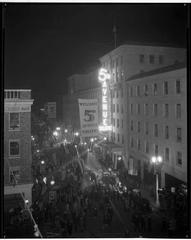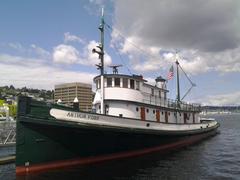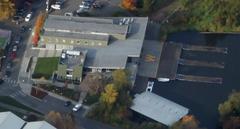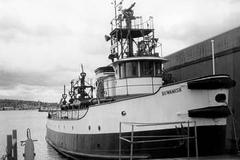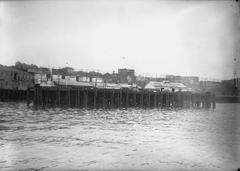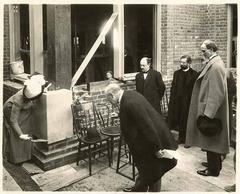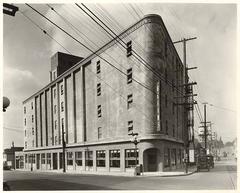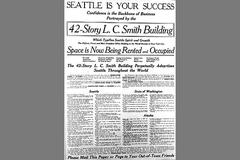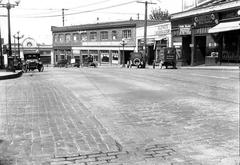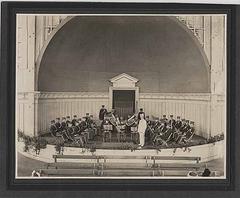
Broken Obelisk Seattle Visiting Hours, Tickets, and Historical Site Guide
Date: 03/07/2025
Introduction
Standing at the heart of the University of Washington’s Red Square, Barnett Newman’s “Broken Obelisk” is one of Seattle’s most powerful and enduring public artworks. Created between 1963 and 1967, this monumental sculpture melds Minimalist form with profound social and historical symbolism. Its striking visual presence, along with its accessibility and central campus placement, make it a must-see for art lovers, history enthusiasts, and visitors exploring the city’s rich cultural landscape.
This guide provides everything you need to know for an enriching visit, including essential historical context, artistic significance, practical information on visiting hours and accessibility, travel tips, and recommendations for nearby attractions. You’ll also find answers to frequently asked questions and curated resources for deeper exploration.
For authoritative background and visitor tips, see Artchive’s profile on Broken Obelisk, University of Washington’s campus art guide, and Trek Zone’s overview of the sculpture.
Table of Contents
- Introduction
- Historical Context and Symbolism
- Artistic Significance and Construction
- Visiting Information
- On-Site Atmosphere and Visitor Experience
- Nearby Attractions
- Interpretive and Cultural Context
- Safety and Preservation
- FAQ
- Conclusion and Visiting Tips
- References
Historical Context and Symbolism
Origins and Creation
Barnett Newman, a leading voice in Abstract Expressionism and Minimalism, completed “Broken Obelisk” in the turbulent 1960s. Newman designed the sculpture as a fractured obelisk—traditionally a symbol of triumph and endurance—balanced on the tip of an inverted pyramid. This inversion and breakage subvert traditional monumentality, compelling viewers to contemplate impermanence, fragility, and transformation (Artchive).
Seattle’s edition, one of only four worldwide, is uniquely sited in Red Square, the University of Washington’s academic and social crossroads. Its public placement aligns with Newman’s intent to provoke reflection and dialogue on justice, activism, and society’s transformation during the era of civil rights and anti-war movements (The Art Daily).
Symbolic Meaning
The sculpture’s fractured form—an obelisk broken at its apex—evokes a sense of disruption and resilience. While the New York and Houston editions emphasize different dedications, the Seattle installation operates as a catalyst for ongoing discussions about justice, activism, and the evolving role of public art (Seattle Star). The reflective pool at its base, unique to Seattle’s version, deepens its contemplative atmosphere.
Artistic Significance and Construction
Minimalism and Newman’s Vision
“Broken Obelisk” stands nearly 25 feet (7.6 meters) tall and is constructed from Cor-Ten steel, a material chosen for its weathering properties and industrial aesthetic (How’s Tech). The sculpture’s clean lines, monumental scale, and interplay with natural light are hallmarks of Minimalist art. The rust-like patina that develops over time symbolizes both endurance and ongoing transformation.
Engineering and Design
The inverted pyramid base, supporting the broken obelisk with apparent delicacy, is an engineering feat that adds to the work’s sense of precariousness and tension. The reflective pool in Red Square further enhances the visual impact, mirroring the obelisk and the Seattle sky (Trek Zone).
Visiting Information
Location and Access
- Address: Red Square, University of Washington, Seattle, WA 98195 (Tripomatic)
- Coordinates: 47°39’21.923” N, -122°18’32.596” E
Red Square is a lively, pedestrian-friendly plaza surrounded by Suzzallo Library, Gerberding Hall, and the Henry Art Gallery. The plaza is easily reached via Seattle’s Link Light Rail (University of Washington Station), multiple King County Metro bus lines, and nearby paid parking garages.
Visiting Hours and Admission
- Hours: Open 24 hours a day, 7 days a week. As an outdoor public sculpture, there are no restrictions on when you can visit.
- Admission: Free. No tickets or reservations are required to view the sculpture.
Accessibility and Travel Tips
- The area around Broken Obelisk is fully wheelchair accessible, with smooth, paved pathways.
- Visit during daylight for the best photography and safety.
- Campus can be busy during events and academic terms; weekdays or early mornings are quieter.
- Public transport is recommended due to limited parking.
On-Site Atmosphere and Visitor Experience
Red Square is both a bustling hub and a space for reflection. The Broken Obelisk’s commanding yet contemplative presence offers an oasis amid academic and social activity. The reflective pool adds tranquility and photogenic appeal, especially during sunrise and sunset. Visitors are encouraged to take photos, but climbing or touching the sculpture is discouraged for safety and preservation (Seattle Star).
Recommended Visit Duration: 30–60 minutes, allowing time to experience the sculpture, reflect, and explore nearby attractions.
Nearby Attractions
- Suzzallo Library: Historic, architecturally significant university library adjacent to Red Square.
- Henry Art Gallery: Contemporary art museum offering rotating exhibitions.
- Burke Museum of Natural History and Culture: Exhibits on natural history and anthropology, a short walk north.
- Drumheller Fountain: Also known as Frosh Pond, with views of Mount Rainier.
- Neptune Theatre: Historic venue for music and performances, 10 minutes away on foot (Trek Zone).
Interpretive and Cultural Context
Seattle’s Broken Obelisk is a landmark in public art, sparking dialogue about justice, memory, and resilience. While the Houston edition is dedicated to Dr. Martin Luther King Jr., the Seattle version’s university setting invites contemplation on social progress, activism, and the responsibilities of higher education. Its presence on Coast Salish land also intersects with ongoing conversations about Indigenous sovereignty and inclusivity (Art Guides).
Safety and Preservation
The sculpture is robustly constructed, but visitors are reminded not to climb or deface it. University security helps ensure the preservation of this important public artwork (How’s Tech).
Frequently Asked Questions (FAQ)
Q: What are the visiting hours for Broken Obelisk in Seattle?
A: The sculpture is accessible 24/7 as an outdoor public artwork.
Q: Is there an admission fee or ticket required?
A: No, visiting Broken Obelisk is free and open to everyone.
Q: Is the site wheelchair accessible?
A: Yes, Red Square is fully accessible with paved pathways.
Q: Can I take photos?
A: Yes, photography is encouraged, but please do not climb the sculpture.
Q: Are guided tours available?
A: The University of Washington occasionally offers art walks that include Broken Obelisk (Show Me Seattle UW Art Guide).
Q: What’s the best time to visit?
A: Early mornings and late afternoons offer the best lighting and fewer crowds.
Conclusion and Visiting Tips
Broken Obelisk is a profound intersection of art, history, and public life—an invitation to reflect on justice, resilience, and the ongoing evolution of society. Its central location, free 24/7 accessibility, and proximity to major campus and city attractions make it an essential stop for any Seattle visitor.
Visitor Tips:
- For the best photos, visit at sunrise or sunset.
- Consult campus maps or the UW Art Walk for a self-guided tour.
- Combine your visit with nearby museums for a richer experience.
- Download the Audiala app for guided tours and stay up-to-date on campus events and cultural highlights.
For further interpretation and local perspectives, see The Art Daily’s interpretation and Seattle Star’s local coverage.
References
- Artchive: Barnett Newman’s Broken Obelisk
- Trek Zone: Visitor Guide
- Seattle Art Museum: Olympic Sculpture Park
- Seattle Star: Local Coverage
- The Art Daily: Broken Obelisk Interpretation
- Show Me Seattle UW Art Guide
- Tripomatic: Broken Obelisk
- How’s Tech: Sculpture Materials
- Art Guides: Symbolism and Interpretation

